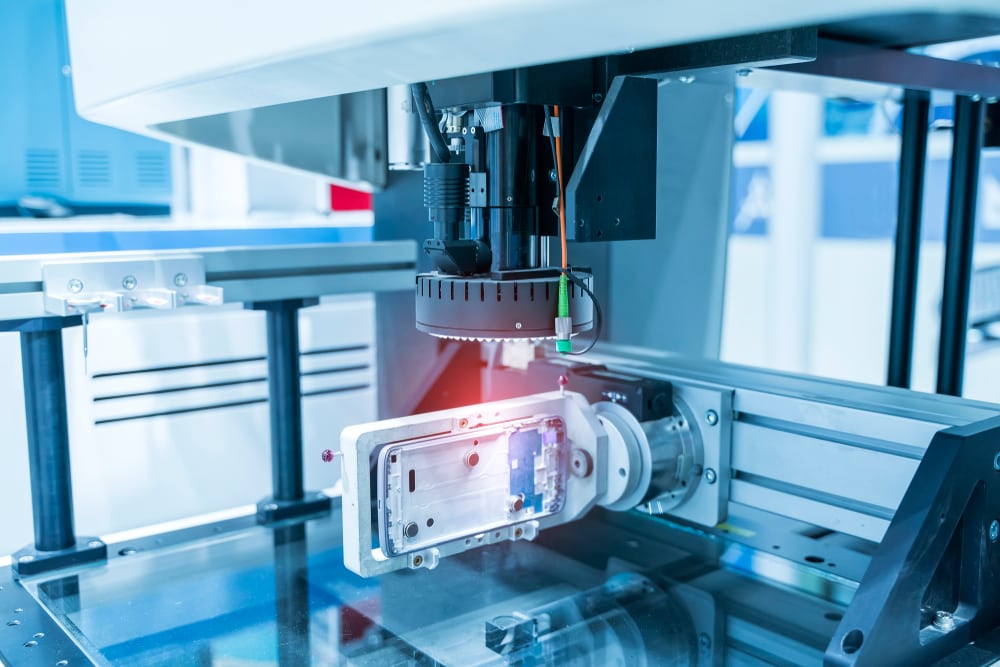News & Blog

The Capabilities of Vision Systems
Machine vision systems were first conceptualised in the 1930’s, however, their implementation into manufacturing lines began around 40 years ago when the 1980’s saw digital advancements progressing at exponential rates. This was an incredibly exciting prospect for many manufacturers as machines were now able to see, interpret, and respond to information simply based on visual input. During the 80’s, the reality of a digital future had officially begun to sink in.
Fast forward to the present day and ‘machine vision systems’ are now incredibly popular in manufacturing and industrial automation. As technology continues to become smaller, faster and more readily available to manufacturers, the need to stay up-to-date becomes ever more important. Simply put, you either stay ahead of the game, or get left in the tracks of innovative competitors.
How Does Machine Vision Work?
Machine vision systems are a technology used to provide image-based automation inspection. Not only can they inspect, but they can actually provide an analysis for automatic inspection, robot guidance, and even motion control.
They use sensors built into industrial cameras, capable of measuring characteristics which are then analysed by computers and software to make decisions. Using the data provided by the cameras, a robotic system is able to perform an action. One of the most common uses for this is inspecting parts with a pass/fail outcome.
Typically, five elements build up machine vision systems. These are:
- Lighting systems
- An optical system or lens
- Sensors
- A vision processing system
- A communications system
These can either be comprised of discrete elements, or they may be integrated into a single unit such as a smart camera.
What Applications are they Used in?
Machine vision systems can be found in many manufacturing and inspection industries. This covers everything from nanotechnology, plastics, primary metals, rubber, tobacco, electricals, entertainment, automotive and many more.
This means that they have a wide range of functions.
- Presence/Absence detection - Machine vision is able to check the number of items and mark them as presents or absent. This can happen in any size; from counting bottles in cardboard boxes to checking the number of screws and washers for securing parts.
- Defect detection - Machine vision systems can be used in industrial production areas. They are, therefore allowing users to get incredibly accurate and non-contact measures that can detect deficiencies in the production process.
- Automated vision test & measurement - Automated vision inspection systems will streamline your quality control, inspection, and even the speed in which you can collect data.
- Pattern matching - The machine vision system can use pattern matching software in order to analyse text, colour, features, orientation, and it can also handle variables like lighting conditions too.
- Vision guided robot - vision-guided robots use machine vision and image processing technology. They are one of the best ways to eliminate time-consuming work and achieve incredibly high productivity.
It is important to note that those aren’t the only functions that machine vision systems are used for and can play a wider role in:
- Part verification (orientation, function, dimension, finished part features).
- Optical character recognition / verification (OCR/OCV).
- Colour verification.
- Sorting.
- Barcode reading and traceability
This video demonstrates how quickly a robot can bin pick plastic bottles using machine vision technology. It starts by using a 3D vision sensor to locate plastic bottles inside of a storage container. A 2D sensor then tracks the orientation of the randomly placed bottles. The data is processed and the pick-and-place robotic arm is able to sort the items.
How can Vision Systems Benefit you?
Many companies are streamlining their productivity with the use of machine vision systems. To find out how your business could benefit from the use of vision systems, or any automation systems for that matter, you can speak to our advisors by calling 01746 866 711 or by emailing info@robomotion.co.uk.